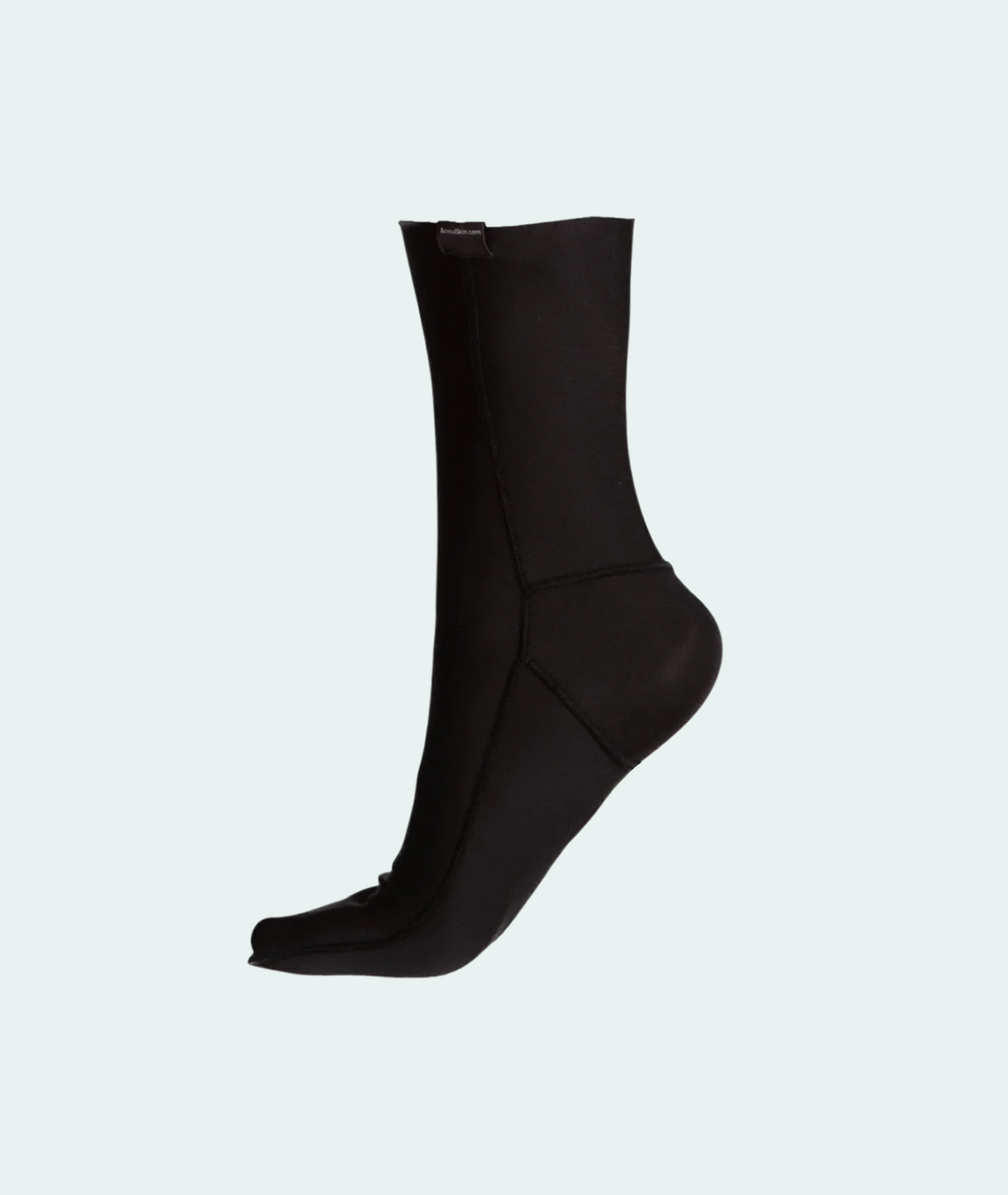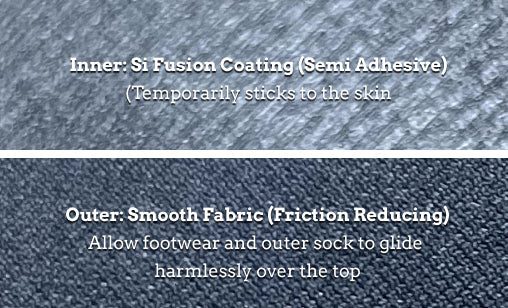Hiking in the USA is as much about the journey as it is about soaking up the natural splendour of the great outdoors. Whether you’re a seasoned trekker, a trail runner, or even a weekend warrior, understanding and practising proper trail etiquette is essential. Not only does it ensure a respectful co-existence with nature and fellow adventurers, but it also preserves the trails for future generations. And while you’re conquering steep ascents and rugged terrain, protecting your feet becomes paramount. That’s where high-performance gear like ArmaSkin’s range of anti-blister socks and blister prevention socks come into play.
Understanding Trail Etiquette
Proper trail etiquette is about more than just following rules—it’s a commitment to the environment and respect for those who share the path with you. Whether you’re exploring a national park, tackling an ultra-endurance event, or moving tactically through varied terrain, the unwritten rules of trail etiquette serve as a guide for ensuring both safety and enjoyment.
1. Respect the Natural Environment
The “Leave No Trace” philosophy is the cornerstone of outdoor ethics. Hikers and outdoor enthusiasts are encouraged to take only memories and photographs while leaving nature exactly how they found it. This means:
Packing out all rubbish
Staying on designated paths
Avoiding unnecessary disruption to wildlife and vegetation
By practising these habits, you help maintain the pristine conditions of trails and reduce erosion, thus ensuring other hikers and future generations can enjoy these spaces.
2. Yield the Trail
Conventional trail etiquette dictates that uphill travellers should be given priority—after all, they’re expending more energy to keep moving. Downhill hikers and faster trail runners need to step aside and yield when encountering someone going up. This courteous pass helps everyone maintain their pace without risk of collisions.
Similarly, when meeting a group from the opposite direction, it’s wise to move to the side and allow space, particularly on narrower trails. The kindness extended in these moments reflects the spirit of community inherent in the hiking culture and ensures that journeys remain enjoyable for all.
3. Stay Aware and Communicate Clearly
Whether you’re trekking solo or with a group, being mindful of your surroundings and communicating with other trail users is fundamental. Here are some tips:
Keep noise levels low to avoid startling wildlife and disturbing others
Announce your presence when passing by in confined areas, especially when overtaking someone
Don’t Let Blisters Slow You Down!
Discover the ultimate solution with ArmaSkin Anti-Blister Socks. Designed with advanced friction-reducing technology, these socks keep your feet dry, comfortable, and blister-free – no matter the challenge.
Shop NowUse hand signals or a friendly nod when interacting with fellow hikers
This vigilance not only helps prevent accidents but also contributes to a welcoming and inclusive trail atmosphere.
Why Trail Etiquette Matters
Every trail has its own set of challenges and idiosyncrasies. When multiple groups converge on the same path, courtesy, and awareness are crucial. Moreover, using the appropriate gear is equally important; practical choices such as wearing high-quality hiking socks can make all the difference during long treks.
For instance, during an intense multi-day trek, the constant movement of your feet is susceptible to abrasion and friction, leading to the dreaded blisters. Here, investing in ArmaSkin socks—coupled with anti-blister liners if necessary—can provide the relief and protection sought by athletes and adventurers alike. Their innovative technology is specifically designed for blister prevention, ensuring your hikes remain comfortable, regardless of the rigours of changing terrain.
Trail Safety and Preparedness
Aside from adhering to social etiquette, being prepared on the trail is a non-negotiable necessity. Whether you’re a hiker, trail runner, or involved in tactical deployments, preparedness can be the difference between a memorable adventure and a potentially hazardous situation.
1. Invest in the Right Gear
Good hiking gear is not just about aesthetics—it’s about performance and safety. A vital component of any adventurer’s kit is the right pair of socks:
ArmaSkin socks and other anti-blister socks help prevent uncomfortable friction and painful blisters
Blister prevention socks, designed with extra cushioning and moisture-wicking capabilities, keep your feet dry and comfortable
For those facing particularly challenging terrains, anti-blister liners offer an additional layer of protection by minimising movement within the sock
Remember, even the most meticulously planned journey can be disrupted if discomfort forces you to slow your pace or, worse, abandon your trek mid-route. So, treat your feet right and invest in quality products to keep you on course.
2. Physical Conditioning and Hydration
Hiking isn’t solely about technique; physical endurance plays an equally important role. Build your stamina through regular training and pay close attention to hydration levels. As you trek, ensure you’re taking periodic breaks and refuelling with water and nutritious snacks. Staying in tune with your body prevents fatigue and keeps your focus sharp.
This awareness extends to managing blister risks—when your feet are tired, they’re more susceptible to developing friction wounds. Upgrading to anti-blister socks, especially those engineered for long hours of activity, can be transformative on strenuous hikes.
3. Navigation and Weather Preparedness
In the wilderness, sudden changes in weather can occur without warning. Ensure you have a reliable map or a GPS device, and always check the forecast before setting out. Layering your clothing is another key strategy—this way, you’re prepared for a variety of conditions. And when it comes to footwear, remember that layers extend to your socks. A high-quality pair of blister prevention socks, designed for various environments, will help keep your feet ready for any challenge.
The Role of Technology in Enhancing Your Hiking Experience
In today’s world, technology plays a vital role in both safety and comfort. It’s no longer enough to simply follow trail etiquette; the modern hiker also leans on innovation to enhance performance. This is particularly evident in the evolution of high-tech hiking apparel and footwear.
1. Advanced Fabric Technologies
Recent advances in fibre technology have given rise to socks that genuinely work as a second skin. For example, ArmaSkin socks incorporate moisture-wicking and anti-friction properties that provide consistent comfort, even under strenuous conditions. The materials used dynamically adjust to your foot’s microclimate, ensuring that sweat is effectively managed and friction points are reduced.
2. Ergonomic Designs
Ergonomically designed socks are more than just a trend—they are a necessity for anyone serious about maintaining active lifestyles. When your feet are cradled in a pair of well-designed anti-blister socks, the risk of chafing and discomfort dramatically decreases during long hikes, runs, or tactical operations. Such socks are engineered to minimise movement within the shoe, which not only helps prevent blisters but also contributes to overall foot stability on uneven ground.
3. Integration with Other Gear
The modern hiker is well versed in the concept of gear integration. Just like a multi-tool that combines several functions in one compact package, the synergy between your hiking boots, gaiters, and socks can create a seamless, protective system for your feet and legs. With ArmaSkin socks, you integrate advanced blister prevention into your overall gear package, ensuring that you’re always prepared, whether you’re scaling mountains or navigating dense forests.
A Day on the Trail: Combining Etiquette with Performance Gear
Imagine setting off on a crisp autumn morning, the golden hues of leaves contrasting sharply with the clear blue sky. You’re not just another face on the trail—you’re a dedicated explorer who respects the outdoors and values every step of the journey. As you set out, you adhere closely to trail etiquette: stopping to let an uphill hiker pass, exchanging friendly nods with fellow adventurers, and ensuring you leave no trace behind. But while the social and ethical aspects of hiking are being respected, you’re also acutely aware of the technical needs of your body.
Because you’ve equipped yourself with premium ArmaSkin socks, your feet remain comfortable despite the demands of the day. As the terrain shifts from smooth dirt tracks to rugged rocky paths, the moisture-wicking fabric and strategically placed cushioning in your anti-blister socks adapt, preventing friction and offering crucial support. In this way, the blend of good trail manners and effective gear allows you—and many others—to fully enjoy the journey without the risk of discomfort or injury.
Additional Tips for Maintaining Trail Harmony
Beyond respecting nature and your fellow hikers, there are other practical ways to enhance your trail experience and contribute to a positive outdoor culture:
Carry a Trail Etiquette Kit
Consider preparing a small kit that includes biodegradable wipes, extra layers, a first-aid package, and information about local trail guidelines. Not only does this readiness display your commitment to safety, but you may also end up assisting someone in need along the trail.
Practice Proper Group Dynamics
If you’re hiking with a group, establish group etiquette before setting off. Decide who leads and who follows, and ensure everyone is aware of pace adjustments, break times, and shared responsibilities (like carrying extra water or snacks). Being prepared as a group is critical—especially when navigating remote or challenging environments where support is limited.
Educate Yourself Continually
The rules of the trail can vary greatly depending on the region and current environmental conditions. Always research local guidelines and be willing to learn from local experts or veteran hikers. By staying informed, you not only protect yourself but also contribute to a safer and more respectful outdoor community.
Blister Prevention: The Unsung Hero of a Successful Hike
It would be remiss not to underscore the importance of blister prevention. Despite the best intentions in trail etiquette and preparedness, many hikers face an unexpected adversary: blisters. These painful nuisances often develop from prolonged exposure to rigorous activity and friction between the skin and footwear.
How Anti-Blister Socks Make a Difference
Modern anti-blister socks, such as those from the ArmaSkin range, are crafted using cutting-edge ergonomic design and high-performance fabrics. Their benefits include:
Superior moisture management, which keeps your feet dry and minimises friction
Adaptive cushioning that protects sensitive areas during long marches or runs
Seamless construction to avoid pressure points that can lead to blisters
When you opt for blister prevention socks or even anti-blister liners, you are making a proactive choice in protecting one of your most valuable assets—your feet. Ensuring comfort on every hike or obstacle race isn’t just a matter of aesthetics, it’s about enhancing performance and overall well-being.
Choosing the Best Socks for Preventing Blisters
The market offers a variety of options for those seeking effective blister prevention solutions. However, not all are created equal. Look for products that highlight features such as moisture-wicking technology, reinforced cushioning, and an anatomical fit. ArmaSkin socks are often recommended because of their meticulous design, which addresses the unique challenges faced by hikers, trail runners, and tactical personnel alike.
By exchanging discomfort for confidence, you allow your focus to remain on the beauty of the trail and the shared experiences with your fellow adventurers.
Wrapping Up: Embracing the Spirit of the Trail
Every journey on the trails is a blend of respect—for nature, for fellow hikers, and for oneself. Upholding trail etiquette is not merely a checklist of dos and don’ts but a holistic approach to the outdoor experience. By showing courtesy through actions, being prepared with the right gear, and prioritising the comfort and protection of your body (especially your feet), you contribute to a collective culture that values harmony in nature and mutual support among adventurers.
As you step onto that winding trail, remember that your reputation as a courteous hiker precedes you. In every nod, every yield on the path, and every effort to keep the environment pristine, you set an example that inspires others to follow your lead. And while the trail challenges you physically, ensuring you set out with quality gear like ArmaSkin socks transforms potential discomfort into a seamless, adventurous journey.
So, as you prepare for your next hiking expedition, consider the dual importance of trail etiquette and advanced blister prevention techniques. Embrace every aspect of the trek—from your commitment to the environment to the preventative measures that safeguard your journey. Whether you’re exploring vast national parks, navigating tactical terrains, or sprinting through obstacle races, let a pair of high-performance anti-blister socks be your constant companion, ensuring every adventure is pain-free and memorable.
If you’re ready to elevate your hiking experience with unmatched comfort and blister prevention, it’s time to explore ArmaSkin’s range of anti-blister socks. Engineered for the rigours of diverse terrains—from urban trails to remote mountain paths—these socks are the perfect companion for any active lifestyle.
Prevent blisters today and enhance your outdoor adventures by visiting our collection at Armaskin. Invest in your comfort, ensure your performance, and embrace every trail with confidence!
By understanding and practising proper trail etiquette, and combining it with the best equipment available, you’re not only protecting your own interests but also contributing to a better, more sustainable way of enjoying the outdoors. Lace-up your boots, pull on your anti-blister socks, and step forward into the wild with respect, readiness, and resilience. Happy hiking!














